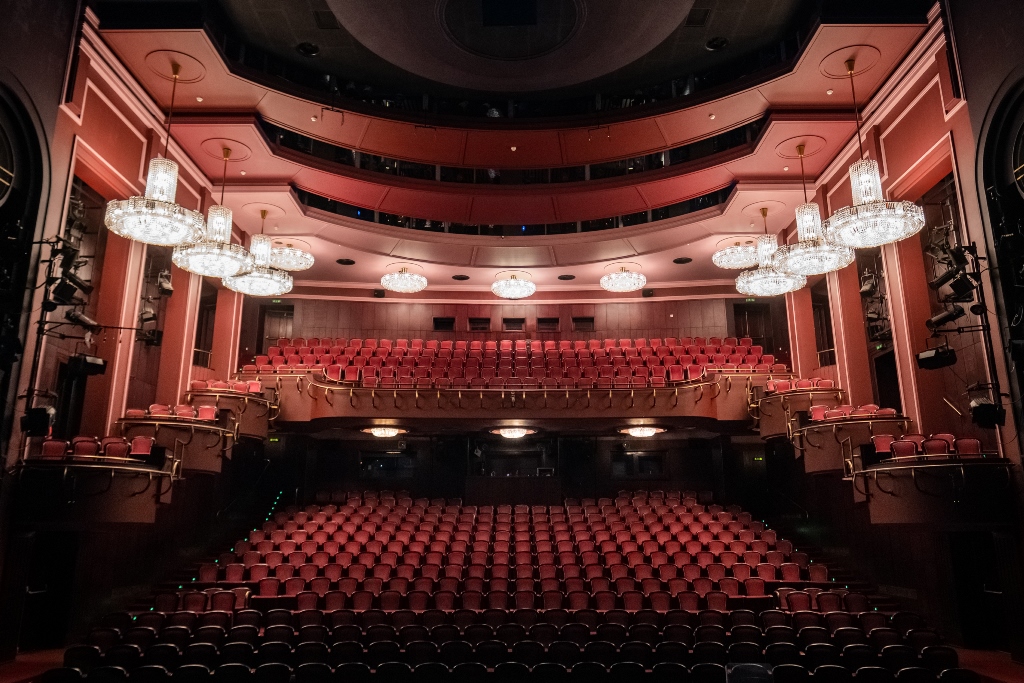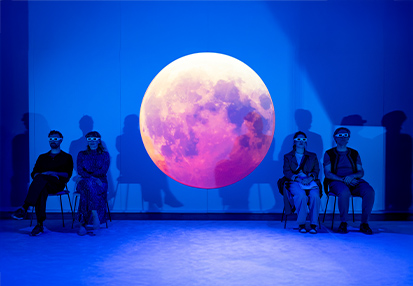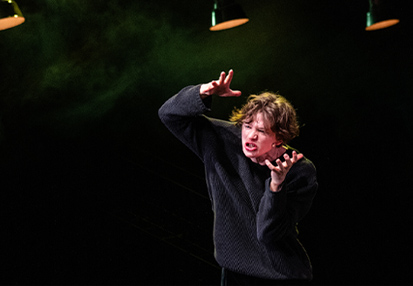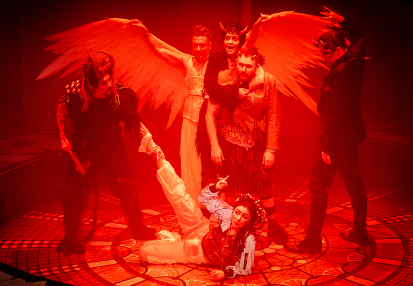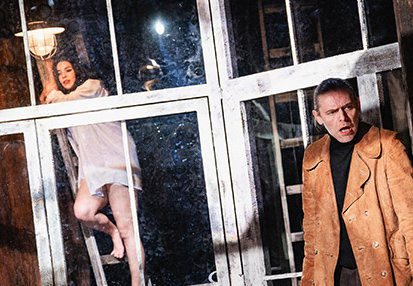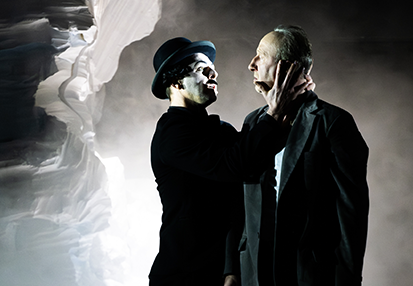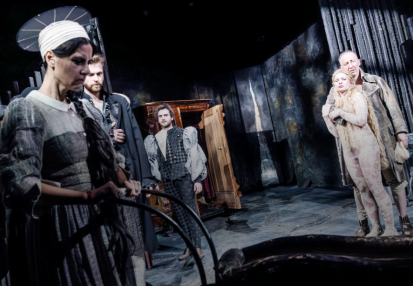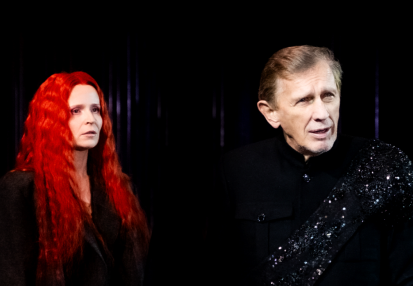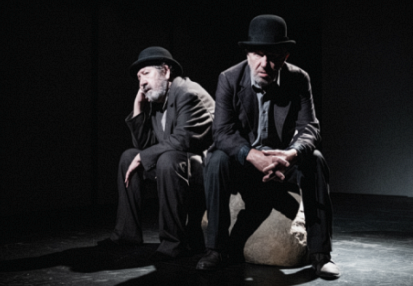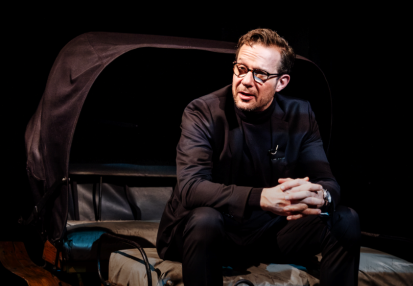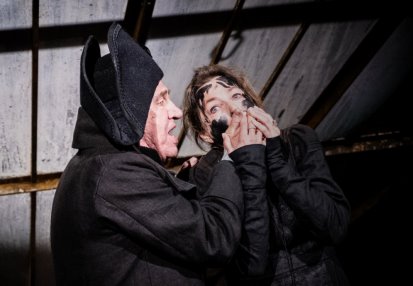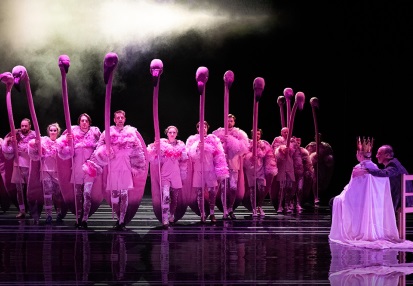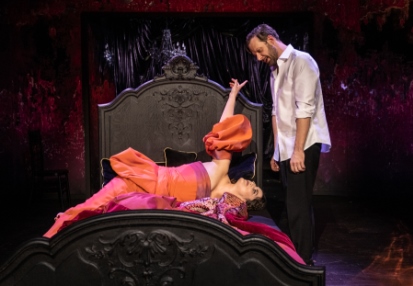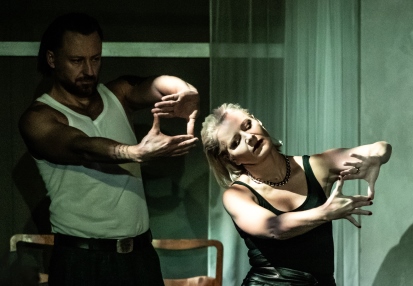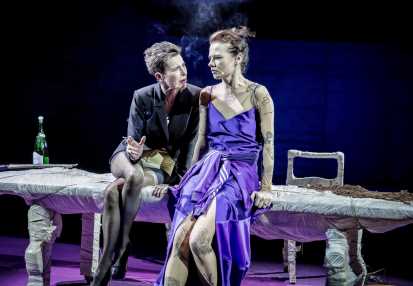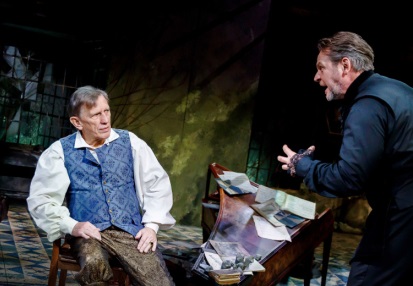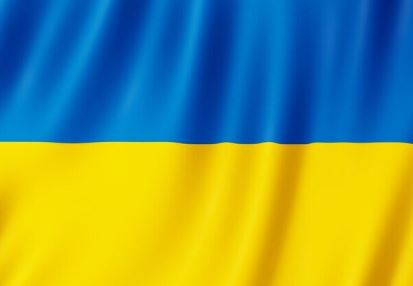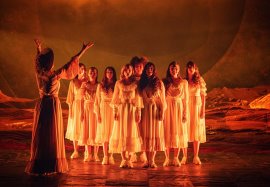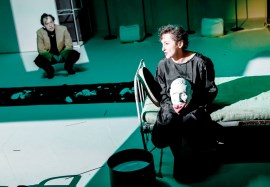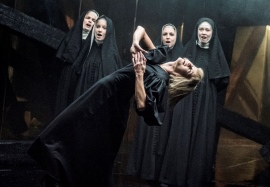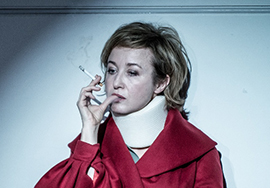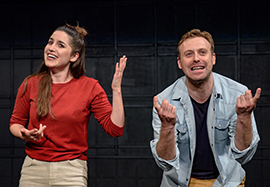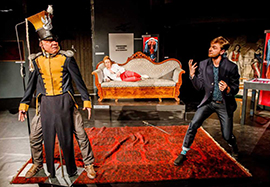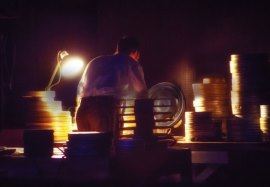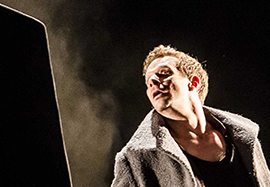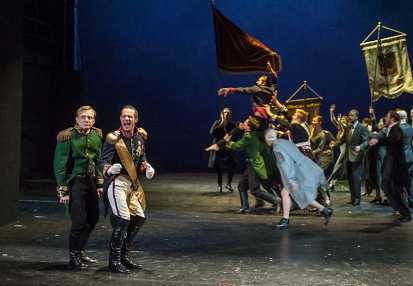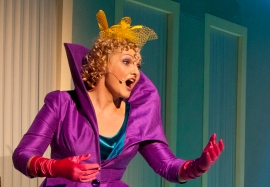Boguslawski Hall
The Bogusławski Hall (large stage) is located in the main building of the National Theatre at 3 Teatralny Square.
Thanks to its continual modernisation, the main stage of the National Theatre is technically one of the most cutting-edge stages in the European Union.
The array of technical equipment on the stage, including general devices, lighting, electroacoustics, stage manager communication systems, and multimedia, provides directors and set designers with ideal conditions for puuting on performances.
The stage area, including the proscenium, amounts to 390 m². The proscenium can be expanded by 120 m². This expansion is achieved by removing seven rows of seats and replacing them with special platforms.
General Equipment
The stage’s lower machinery consists of:
– a single-level orchestra pit located in the proscenium, which, when lowered approximately 2.6 m below stage level, creates an orchestra pit for 34 musicians.
– four two-level stage pits/platforms with floor dimensions of 14 x 3 m. The maximum extension of each platform above stage level is 4.24 m. The top level of each pit can be tilted at an angle of 6.7°, which, with appropriate level configuration, allows for a pitched stage floor.
– a storage pit located at the rear of the stage, consisting of three extendable shelf racks for storing long fabric set elements.
– two stage trolleys with dimensions corresponding to the top level of the main pits/platforms, on which previously assembled sets can be smoothly loaded onto the stage from a large side stage area.
The stage’s upper machinery consists of:
– 44 linear set decoration lifts (bars) with a lifting capacity of 500 kg each.
– 10 spot decoration lifts with a lifting capacity of 500 kg each.
– 4 light bridges for suspending lighting equipment.
– a two-part main curtain with three options for covering the stage: by lifting, extending, and diagonally folding the curtain.
– fire curtains that separate fire protection zones: a main fire curtain separating the audience from the stage and two side fire curtains separating the stage from the stage wings.
All of the above-mentioned devices are hydraulically driven (except for the stage trolleys and the main curtain, which are electrically driven) and feature full safety automation and computer controls.
Lighting Equipment
The lighting equipment consists of next-generation projectors that allow for remotely controlled changes in lighting angles and directions, as well as colour temperature selection and projections using GOBO masks (with rotation, e.g. continuous left/right speed adjustment) and framing via internal diaphragms. Lighting is controlled from a computer control room.
Electroacoustic Devices
Our electroacoustic tech is made up of a sound system that ensures uniform sound coverage. It consists of a set of wireless microphones, full-range speakers, subwoofers, and surround speakers positioned on the side walls of the auditorium. This allows for the creation of so-called surround sound.
Stage Managers’ Communication Technology
The stage managers’ communication technology consists of the three stage managers' desks – one for each stage, i.e., the Bogusławski Hall, the Jerzy Grzegorzewski Stage at Wierzbowa, and the Studio Stage. Each stage manager conducting a rehearsal or performance on a stage has access to the dressing rooms, the lighting and sound engineers, and the stage mechanics via the desks.
The auditorium
The auditorium (ground floor, balcony, 6 side boxes) boasts a total of 594 seats. The seating arrangement ensures good visibility from every seat. The auditorium is naturally accessible to people with disabilities. The auditorium is equipped with a wireless system to hear the stage action and an audio description system for 50 hearing-impaired or blind audience members.
The main building of the Theatre at 3 Teatralny Square is connected to the Theatre's technical building located at ul. Wierzbowa 3 by an underground tunnel running beneath Wierzbowa Street and this tunnel serves as a transport route for scenery. The Theatre buildings and the underground passage are protected by a modern fire detection and alarm system, which controls fire protection equipment, including a sprinkler system, a ventilation system, and smoke extraction systems. The system is monitored 24 hours a day by the Theatre Emergency Service, which provides fire protection at both the National Theatre and the Grand Theatre (i.e. the National Opera).
